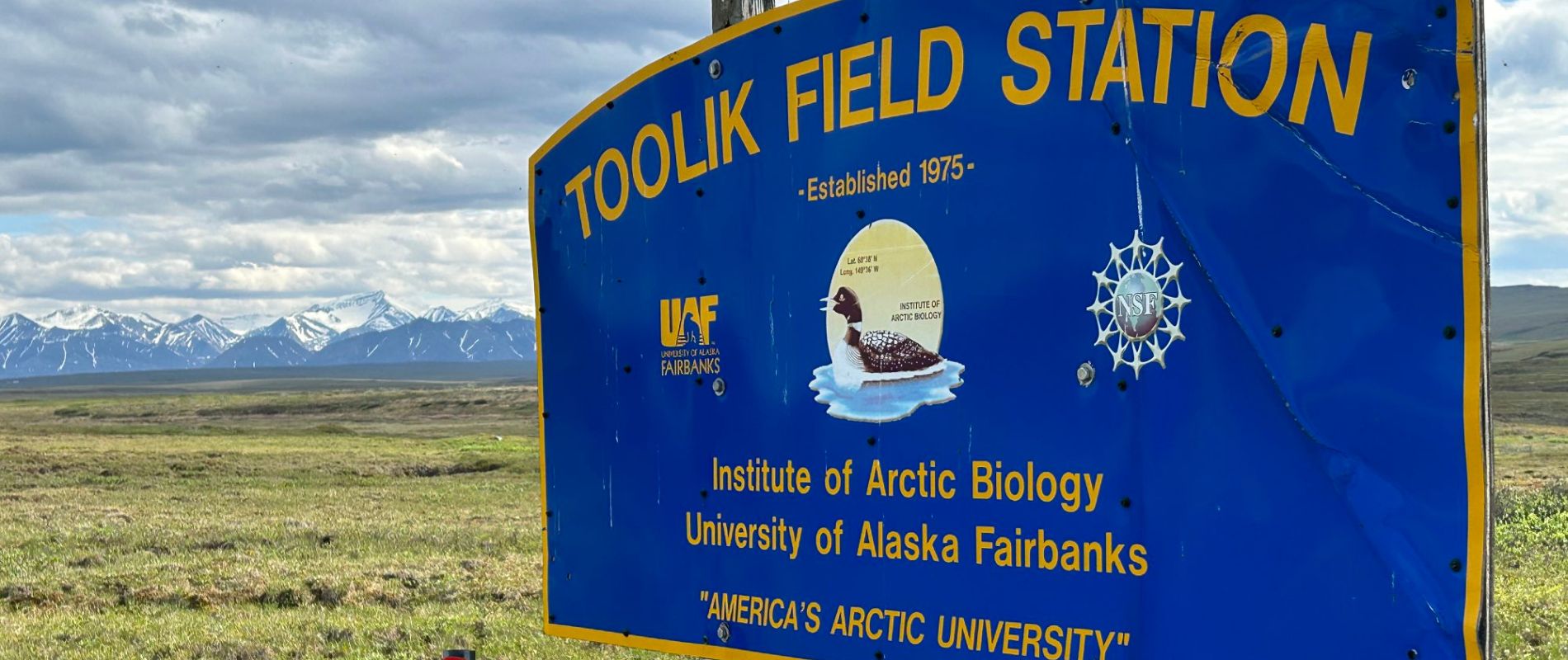I am writing this month’s Director’s message from the Toolik Field Station on the North Slope of Alaska. At 68°N, the University of Alaska Fairbanks-run facility is north of the Arctic Circle. The Field Station is funded by a range of agencies, with the ongoing support of the National Science Foundation (through their Polar Program) being crucial to Toolik’s mission of “understanding the Arctic in a global context”. For over 30 years, the US Government has funded long-term field manipulation studies to explore how changes in temperature, nutrient availability, snow accumulation and water availability influence the structure, function and community composition of a range of arctic environments. Key to this has been an ongoing commitment to maintaining the field manipulation experiments while also providing access to research grade laboratories. The combination of field sites plus fully equipped labs means that it is possible to undertake world-class research on arctic biota in ways that would be impossible without the facility based onsite. While Australia is building some capabilities that mimic elements of Toolik (e.g. TERN support of Supersites), there remains a big gap between the USA and Australia in provision of on-site, field-based laboratories. Australia may not be able to fully replicate the scale of research supported in the USA, but there is still much we can learn on how ongoing support for long-term science projects can deliver (globally significant) outcomes not possible through incremental, fragmented and small-scale investments.
This is my second visit to Toolik, the first being in 2009. For both visits – then and now – the goal has been to quantify the temperature and light responses of metabolism in arctic plants. With partners from around the world, we use such data to map how metabolic rates (with a focus on photosynthesis and respiration) vary among terrestrial biomes across the planet. We do this because without a clear understanding of how climate and environmental gradients influence carbon exchange in plants, climate modellers cannot predict how hot the world will be in the coming decades. The exchange of carbon dioxide between plants and the atmosphere is huge. Because of this, we need to better understand how climate drivers, such as temperature, influence carbon exchange between plants and the atmosphere. The biggest change from 2009 is the technology we have at our fingertips. On my last visit, we patiently collected 10-20 measurements of leaf carbon exchange a day. By contrast, we have been able to make ten times as many measurements this year – a steep change in output compared to 2009. Here, the key has been the development of high-throughput technologies that harness the power of robotics and use of special surfaces coated with fluorophores that measure concentrations of key atmospheric gasses. Over the coming three years, my lab will be visiting sites around the world to use these technologies to dramatically increase the availability of data, and, in doing so, improve our ability to model current and future rates of carbon exchange across the Earth.
Before coming to Alaska, I attended Hort Connections in Adelaide. I spent most of my time walking around the trade floor, talking to companies and agencies involved in the production, processing and transportation of horticultural products. I was particularly impressed by how the event brought together attendees who represented the full breadth of the horticultural food system, including companies that support farmers (such as by producing fertilisers that improve the nutrient content and use efficiency of crops), growers themselves, as well as many of the companies and agencies that deal with food transport, processing, and marketing and sales. I also used the event to get an idea of what some of the big challenges facing the horticulture sector. Biosecurity was one issue that came up again and again, as was how to deal with rising labor and input costs. In the coming months, CEAT will explore ways for the wider capability of the ANU to address these and other challenges facing the horticulture industry.
Finally, back home in Canberra, the CEAT team have been busy welcoming four new team members. Benjamin Bek will be backfilling Mandy Nguyen as the Chief Operating Officer while Mandy is on parental leave. Liam Wong joins us as a data analyst, having recently finished his Masters studies at ANU. Alex Hart joins our administration team having moved from Queensland, and, finally, Anne-Sophie Dielen comes to us from Crop Life and will be working with Martin Amidy in the Research Translation space.
Also, as mentioned last month, the extension of our Hub space is now complete. If you have a business with an agri-food focus that would benefit from unique access to ANU researchers and infrastructure to support your R&D and growth, please get in touch with the CEAT team at [email protected]. We would also welcome interest from businesses headquartered outside Australia with an interest in being based at ANU, in our nation’s capital.
Oh, if you want to see what Toolik looks like, take a look at an arctic interpretation of Michael Jackson’s Thriller here. It’s worth watching!
Cheers,
Owen
